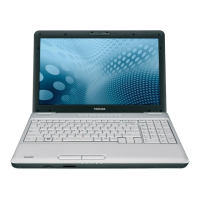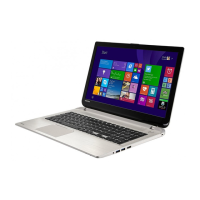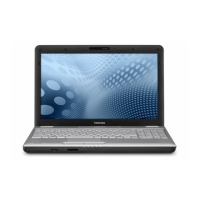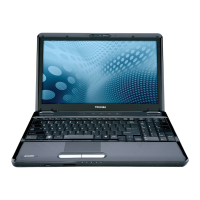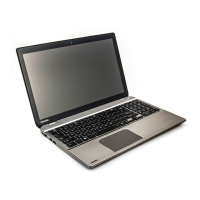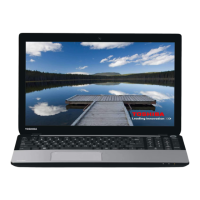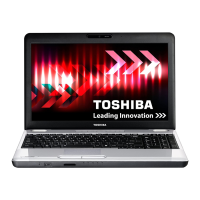
Do you have a question about the Toshiba Satellite L500 and is the answer not in the manual?
| Bus type | FSB |
|---|---|
| Stepping | R0 |
| Tjunction | 90 °C |
| Processor cache | 2 MB |
| Processor cores | 2 |
| Processor model | T6600 |
| Processor family | Intel® Core™2 Duo |
| Processor series | Intel Core 2 Duo T6000 Series |
| Processor socket | Socket 478 |
| Processor codename | Penryn |
| Processing Die size | 107 mm² |
| Processor frequency | 2.2 GHz |
| Processor cache type | L2 |
| Processor lithography | 45 nm |
| Processor manufacturer | Intel |
| Processor front side bus | 800 MHz |
| Processor operating modes | 64-bit |
| ECC supported by processor | No |
| Thermal Design Power (TDP) | 35 W |
| CPU multiplier (bus/core ratio) | 11 |
| Number of Processing Die Transistors | 410 M |
| Motherboard chipset | - |
| HDD speed | 5400 RPM |
| HDD interface | SATA |
| Optical drive type | DVD Super Multi DL |
| Total storage capacity | 320 GB |
| Display diagonal | 15.6 \ |
| Display resolution | 1366 x 768 pixels |
| Native aspect ratio | 16:9 |
| Internal memory | 4 GB |
| Internal memory type | DDR2-SDRAM |
| Memory layout (slots x size) | 2 x 2 GB |
| Discrete graphics card | Yes |
| Discrete graphics card model | Intel GMA GM45 |
| Maximum graphics card memory | - GB |
| Type | PC |
| CD-R read speed | 24 x |
| DVD+R read speed | 8 x |
| CD-RW write speed | 4 x |
| Networking topology | Ethernet |
| Operating system installed | Windows 7 Home Premium |
| Battery life (max) | 3 h |
| Number of battery cells | 6 |
| Charging port type | DC-in jack |
| Serial ports quantity | 0 |
| USB 2.0 ports quantity | 3 |
| Cable lock slot type | Kensington |
| Product color | Black, Silver |
| Pointing device | Touchpad |
| Keyboard manufacturer | A4 |
| Processor code | SLGF5 |
| Processor ARK ID | 37255 |
| Processor package size | 35 x 35 mm |
| Depth | 259 mm |
|---|---|
| Width | 383 mm |
| Weight | 2720 g |
| Height (rear) | 39.25 mm |
| Height (front) | 35.5 mm |
Guidelines for ventilation, environment setup, and preventing injury.
Details processors, chipsets, memory, video RAM, disks, and optical drives.
Covers ports, slots, modem, LAN, and wireless communication features.
Details function buttons, system indicators, and keyboard indicators.
Explains optical disc drive types, region codes, and media compatibility.
Steps for connecting the AC adaptor and initial computer startup.
Explains how to use and manage Sleep and Hibernation modes.
Covers computer restarting procedures and system recovery options.
Covers sound system adjustments and web camera usage.
Details modem operation, region selection, and wireless connectivity.
Explains the functionality of hot keys and FN key combinations.
Details power status based on AC adaptor and battery conditions.
Covers battery care, charging, monitoring, and replacement.
Explains password settings and computer power-up modes.

